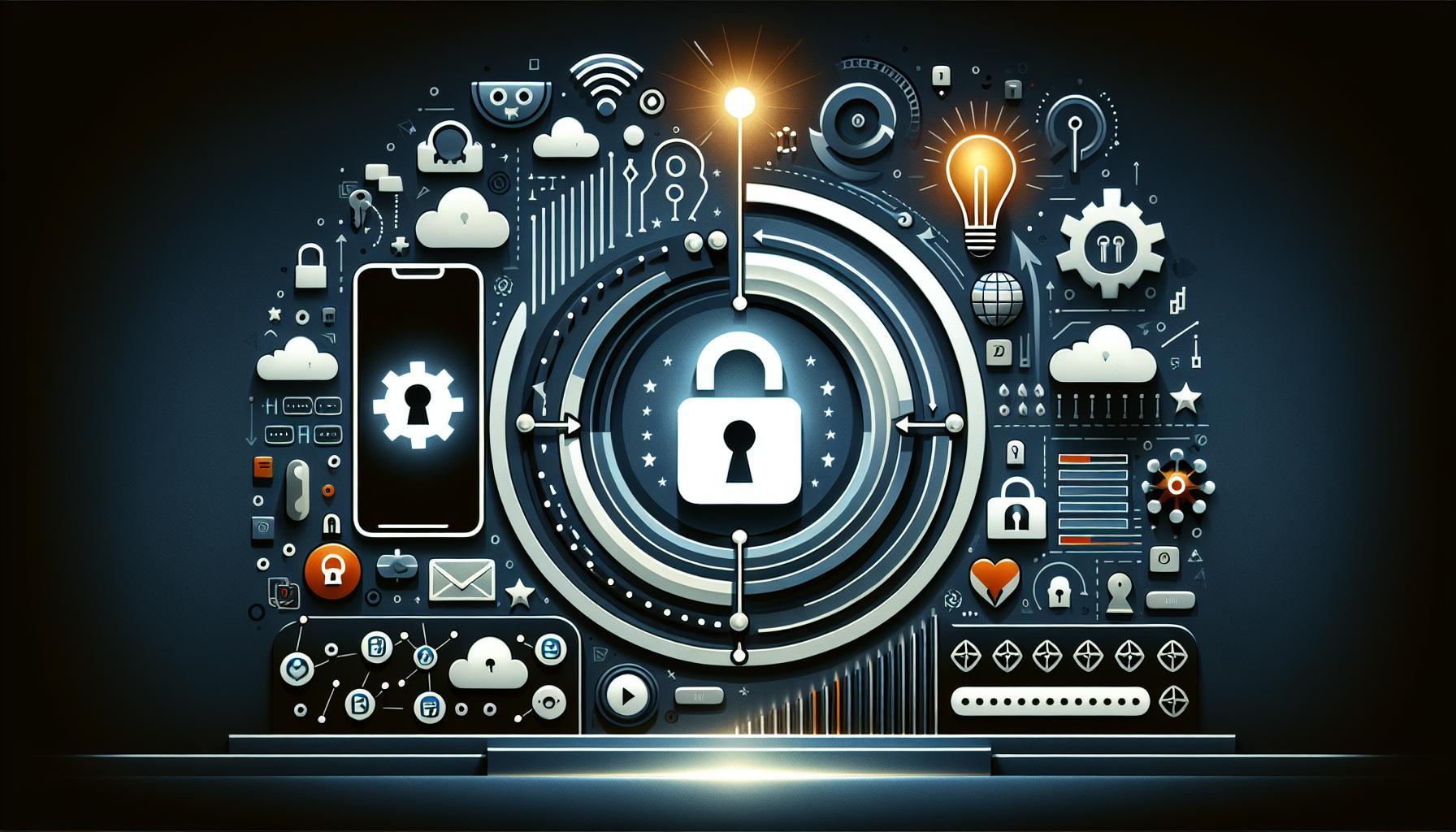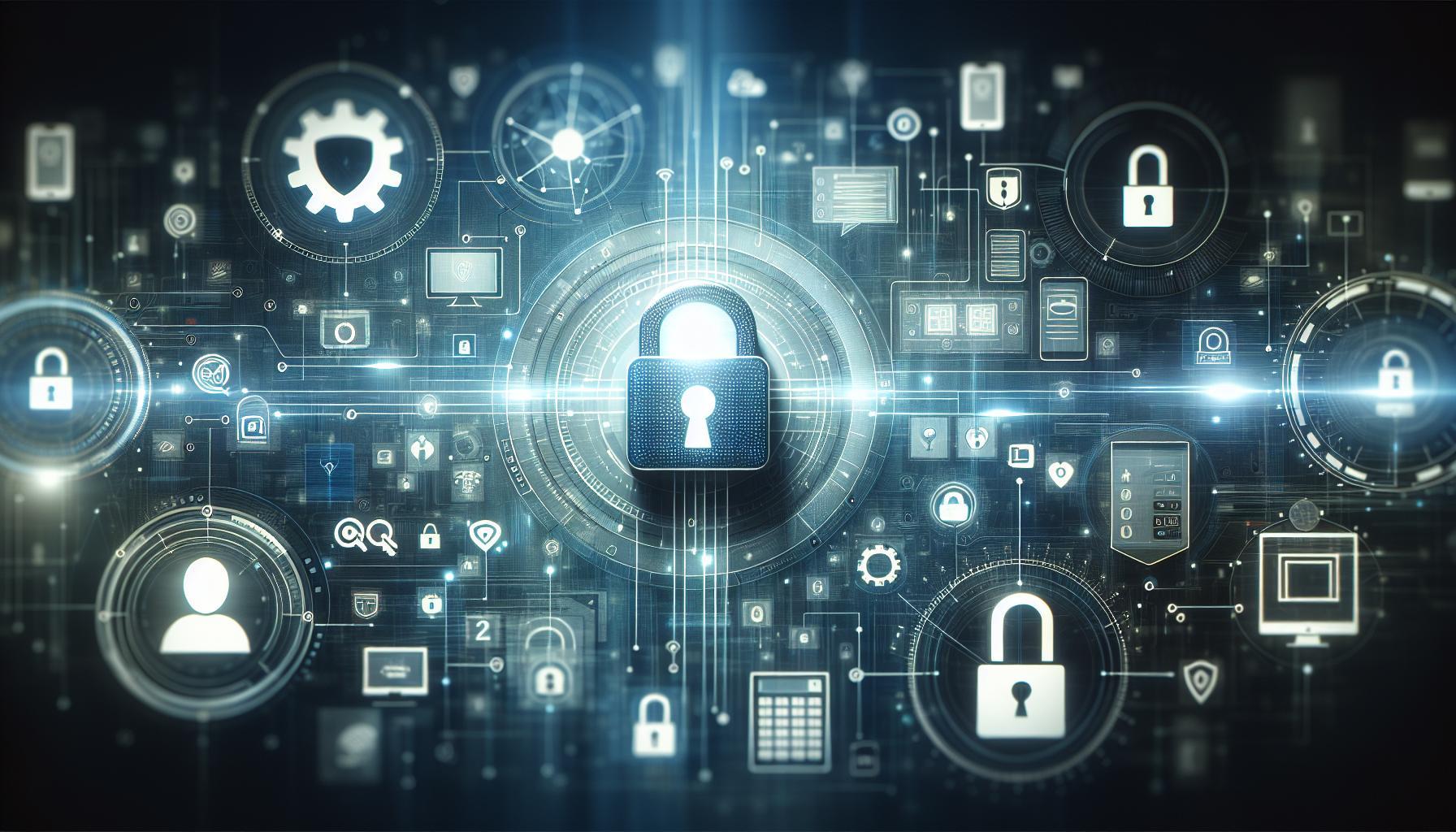Forgetting your computer password can feel like a roadblock to your productivity, leaving you locked out when you need access the most. Fortunately, regaining control is possible with straightforward methods to reset your password.Understanding these processes ensures you maintain access to your important files adn keeps your workflow uninterrupted.
Understanding the Importance of a Strong Password
A strong password is your first line of defense against cyber threats, acting as a formidable barrier to your personal and sensitive facts. In today’s digital landscape, where data breaches and hacking attempts are increasingly common, understanding the significance of having a robust password cannot be overstated. A mere combination of your pet’s name or a birthdate may leave your accounts vulnerable to intrusion. Rather, consider how a well-crafted password not only protects your online presence but also fortifies your peace of mind, especially when you need to reset your computer password and regain full control over your device.Creating a strong password involves a unique blend of complexity and memorability. Here are some key principles to adhere to:
- Length Matters: Aim for at least 12 characters, as longer passwords are inherently more secure.
- Use a Mix of Characters: Incorporate uppercase and lowercase letters, numbers, and symbols to create a diverse password.
- Avoid Common Words: Steer clear of predictable patterns, personal information, or common phrases that can easily be guessed or found through social engineering.
- Consider Passphrases: Using a combination of unrelated words can create a strong yet memorable password. For example,”BlueSky!Dance$42″ combines simplicity with complexity.
In addition to these tips, leveraging password management tools can help you create and store strong passwords without the hassle of memorizing them all.these tools can automatically generate secure passwords for you, ensuring that your accounts remain protected. Remember, when you reset your computer password and regain full control, it’s essential to update passwords periodically and avoid recycling old ones.
To illustrate the impact of a robust password strategy, consider the potential risks involved with weak passwords. A study revealed that 81% of hacking-related breaches leveraged stolen or weak passwords, emphasizing the need for vigilance in protecting access to critically important accounts. By investing time in crafting strong passwords,you’re not just protecting your devices; you’re also safeguarding your financial information,personal communications,and more against unauthorized access.
Common Reasons for Resetting Your Computer Password
In today’s digital age, the security of your online and offline data is paramount, making password management crucial. Users may find themselves needing to reset their passwords for various reasons, all tied to ensuring their devices and sensitive information remain secure. Each scenario emphasizes the importance of a timely and effective response to password-related challenges, allowing you to regain full control over your computer and prevent unauthorized access.
One frequent reason for resetting a computer password is the forgotten password. It’s a situation many people encounter—whether it’s due to a busy lifestyle, a recent change in their password, or simply misremembering. In such cases, resetting your computer password becomes essential to accessing your files and applications, thereby restoring your workflow without meaningful downtime.
Another common scenario arises from security concerns. If you suspect that your account has been compromised or have recently experienced a security breach, it is vital to reset your password promptly. This could involve hacking attempts or unauthorized access to your accounts, making a strong and distinct password critical. Regularly updating your password can serve as a proactive measure against potential threats, enhancing your system’s security.
Moreover, users who share their computers may need to reset their passwords to maintain privacy. If multiple individuals access the same device, ensuring that each user has distinct and secure passwords can help safeguard personal data. By resetting passwords periodically, you can prevent unauthorized access by previous users and maintain a secure environment.
Lastly, after a system update or hardware change, resetting your password might potentially be advisable. updates can sometimes lead to glitches,including password recognition issues. In instances where users find themselves locked out post-update, resetting the password not only restores access but also ensures compatibility with any new security measures implemented by the update.
These scenarios underscore the importance of being prepared to reset your computer password and regain full control,fostering a safer,more efficient digital environment.
Step-by-Step Guide to Resetting Your Password on Different Operating Systems
When you find yourself locked out of your computer, the frustration can be overwhelming. Fortunately, resetting your password on different operating systems is a straightforward process that can help you regain full control quickly.Below, you’ll discover how to reset your password on popular platforms, such as Windows, macOS, and Linux, empowering you to access your files and applications with ease.
Resetting Your Password on Windows
Windows offers a couple of methods for resetting your password, depending on your version. Here’s a rapid breakdown:
- Using Password Reset Disk: If you previously created a password reset disk, insert it, and follow the prompts that appear on-screen after entering the wrong password.
- Using a Microsoft Account: If your Windows account is tied to a Microsoft account, you can easily reset your password online. Just visit the Microsoft account recovery page, and follow the verification steps.
- Accessing Safe Mode: Restart your computer and press F8 during boot-up. Select “Safe Mode with Command Prompt.” Once in Command Prompt, you can type
net user [YourUsername] [NewPassword] to set a new password.
Resetting Your Password on macOS
For Mac users,the process can also be quite simple. Here are the steps you can take:
- Using Apple ID: If you linked your Apple ID to your Mac, simply click the question mark next to the password field, and follow the instructions to reset it using your Apple ID.
- Recovery Mode: Restart your Mac and hold down command + R until the Apple logo appears. Choose “Utilities” from the menu and select “Terminal.” then type
resetpasswordand hit Enter to access the password reset utility.
Resetting Your Password on Linux
Linux offers a unique approach to resetting your password. Here’s how:
- using Recovery Mode: Reboot your machine and hold the Shift key to access the GRUB menu. Select the recovery mode option. once in the recovery mode menu, select “root” for a root shell. You can then use
passwd [YourUsername]to enter a new password. - Using Live USB: if recovery mode isn’t an option, boot from a Live USB.Once in the Live environment, mount your filesystem and use the
passwd [YourUsername] command to reset your password.
Summary of Password Reset Methods
To provide a quick overview, here’s a comparison of the password reset methods:
| Operating System | Password Reset Method | Special Requirements |
|---|---|---|
| Windows | Password Reset Disk, Microsoft Account, Safe Mode | None / Account Access |
| macOS | Apple ID, Recovery Mode | linked Apple ID |
| Linux | Recovery Mode, Live USB | Bootable Live USB |
By following these streamlined steps, you can effectively reset your computer password and regain full control over your device. Whether you’re using Windows, macOS, or Linux, ther’s a tailored solution to meet your needs.
Using Built-in Tools for Password Recovery
When it comes to regaining access to your system after you’ve forgotten your computer password, built-in tools can be a lifesaver. Many operating systems come equipped with robust features designed explicitly for password recovery, ensuring that you can regain control without the need for external software. Understanding these tools will not only help you reset your computer password but will also empower you to manage your security settings more effectively.
Windows Recovery Options
Windows systems offer a straightforward method to reset your password using built-in recovery tools. If you’ve set up a password reset disk previously, you can use it to quickly regain access.Alternatively, if you’re locked out, the system allows access to advanced recovery options during the boot process. By selecting “Repair your computer,” you can navigate to ”Troubleshoot” and access the “Reset this PC” feature, which not only helps in resetting your password but also in restoring your PC to its original state if necessary.
For Windows 10 and 11 users,you can harness the power of the microsoft account recovery system.If you use a Microsoft account to log in, you can easily reset your password online by visiting the Microsoft password reset page. You’ll need to verify your identity through an email or phone number associated with your account, making it a secure solution.
MacOS Recovery Features
Mac users also have access to excellent built-in tools for password recovery. By booting your Mac into Recovery Mode (holding Command + R during startup), you can access the “Terminal” application. Here, typing a simple command can help reset your password without difficulty. for systems with macOS High Sierra or later, the reset process has become even more user-friendly, allowing users to reset their password directly from the login screen using their Apple ID credentials.
Also, utilizing the “Reset Password” option found in the Utilities menu can guide you through a straightforward process to regain access. This tool is especially useful if you’ve forgotten your password or have moved to a new system and are still learning the ropes.
Securing Your Recovery Options
After successfully resetting your computer password and regaining full control, it’s vital to enhance your account’s security. Here are a few actions you can take:
- Enable Two-Factor Authentication: This adds an extra layer of security to your accounts and can prevent unauthorized access.
- Create Security Questions: Setting up questions can help in scenarios where you forget your password again.
- Keep a Backup Password Reset Disk: Regular updates of your reset disk can be crucial if you find yourself locked out.
By understanding and leveraging the built-in tools available in your operating system, you can not only reset your computer password with ease but also bolster your security measures for the future.
What to Do If You’ve Forgotten Your Password: Tips and Tricks
Forgetting your password can feel like losing a key to your digital life, but there are effective ways to regain access swiftly. When faced with this situation, the first step is to assess the tools at your disposal. Modern systems offer password recovery options that can save you time and hassle. Whether you’re dealing with a computer, a smartphone, or an online account, knowing your recovery options is key.
Utilize Built-In Recovery Options
Most operating systems and online services have built-in recovery tools designed to assist users in resetting access in a secure manner. here are some general steps to follow:
- Check for Recovery Emails: If you have linked an alternate email address, consider checking it for recovery instructions.
- Leverage Security Questions: Some systems allow you to answer security questions to verify your identity.
- Two-Factor Authentication: If enabled,you may receive a code on your mobile device or through an authentication app,which can definitely help you reset your password quickly.
Securely Reset Your password
Resetting your password should be done with care to maintain account security. Here’s a streamlined approach to ensure you regain control effectively:
- Access the Password Reset Page: Navigate to the account’s password assistance page.This simple step is crucial for starting the recovery process.
- Use a Trusted Device: Attempt the reset from a device where you’ve recently accessed the account,as this can streamline verification.
- Create a Strong New password: Choose a unique password that mixes letters, numbers, and symbols, avoiding any that you’ve previously used. this not only secures your access but also minimizes the risk of future breaches.
Keep a Record of Your Credentials
To prevent future lockouts,maintaining a secure record of your passwords is essential. consider using a password manager that can store and encrypt your passwords safely. These tools not only help you generate complex passwords but also auto-fill them on accounts, reducing the likelihood of forgetting them in the first place.
when you’ve forgotten your password, strategic steps such as utilizing recovery options and ensuring your new password is secure can make all the difference in regaining access quickly and securely. Don’t let a forgotten password hinder your digital experience—act decisively with these tips!
Maintaining Password Security: Best Practices for the Future
Maintaining strong password security is crucial in a digital age where cyber threats are more prevalent than ever. After you successfully reset your computer password and regain full control, it’s essential to implement best practices to protect your online and offline accounts from unauthorized access.
One of the most effective strategies is to use complex and unique passwords for each of your accounts. This reduces the risk of a single compromised password impacting multiple accounts.Consider the following guidelines for creating robust passwords:
- Length and Complexity: Aim for at least 12-16 characters, incorporating a mix of uppercase letters, lowercase letters, numbers, and special characters.
- Passphrases: Use a memorable phrase and modify it with numbers or symbols. For example, “I love hiking in 2023!” could become ”IL0v3H!k1ngIn2023!”
- Regular Updates: Change your passwords every 3-6 months to minimize the risk of prolonged unauthorized access.
Utilize Password Managers
Employing a password manager can considerably enhance your password security. These tools store and encrypt your passwords, allowing you to use complex passwords without the hassle of remembering them. additionally,many password managers have features that can generate strong passwords for you. This way, you can ensure that your systems remain secure while minimizing the risk of forgetfulness after resetting your computer password.
Enable Two-Factor Authentication (2FA)
Adding an extra layer of security through two-factor authentication is another highly recommended practice. By requiring an additional verification step—such as a code sent to your mobile device—this method significantly reduces the risk of account breaches. Whenever possible, activate 2FA on your accounts, particularly on critical services like email and banking.
protecting your digital identity requires proactive measures. Adopting strong password practices, utilizing password managers, and enabling two-factor authentication can go a long way in enhancing your security. By focusing on these areas, you not only safeguard your accounts but also maintain peace of mind in an increasingly connected world.
Troubleshooting Problems After a Password Reset
after successfully resetting your computer password, it’s not uncommon to encounter a few hiccups along the way. Whether it’s being locked out of certain applications, missing files, or unexpected prompts for old passwords, these issues can be annoying and disruptive. Understanding how to troubleshoot these problems can ensure a smoother transition back to using your device with full control and ease.
Common Issues After a Password Reset
When you reset your computer password, you may face a number of common problems:
- Access Denied to Files or Applications: Programs that require your previous password could restrict your access, leading to frustration.
- Account Sync Problems: If you use cloud-based services, your reset password might create conflicts or delays in synchronization.
- Error Messages: Occasionally, you might receive persistent error messages related to your previous password, which can hinder your operations.
- Change of Admin Rights: Depending on your system configuration,a password reset might alter your user permissions,resulting in unexpected restrictions.
Step-by-Step Troubleshooting Guide
When dealing with these issues, follow these actionable steps to regain access and functionality:
1. Re-Login in Safe Mode
Boot your computer in Safe Mode to troubleshoot without background applications interfering. This mode often allows access to system functions without password prompts.
2. Check User Accounts Settings
Ensure that your account is still set as the administrator. Go to:
- Control Panel > User Accounts > Change your account type.
If necessary, elevate your account’s privileges to restore full functionality.
3. update Credentials on Applications
For applications that use your old password, ensure to update your credentials within each application. Look for a settings or account option and input your new password.
4. Synchronization Checks
For cloud services, re-login using your new password. This often resolves any issues with syncing files across devices. follow this flow:
- Log Out of the Service > Clear cache (if necessary) > Log back In with New Password.
5. System Restore
If problems persist, consider performing a system restore to revert to a point where everything functioned correctly. Access this by:
- Control Panel > Recovery Options > system Restore.
be cautious, as this may affect other changes made after the restore point.
final Thoughts
Encountering issues after a password reset can be frustrating, but implementing these troubleshooting tips effectively can help resolve most problems. It’s essential to handle each potential issue systematically to regain control of your computer swiftly and efficiently. Remember, patience and methodical approaches are key to resolving post-reset troubles and enjoying seamless access once again.
When to Seek Professional Help for Password Issues
In the digital era, navigating password issues can feel like traversing a minefield. While many people prefer to tackle these challenges on their own, certain situations warrant the expertise of a professional.Recognizing when to seek assistance not only saves time but also ensures that you regain access to your systems securely. From simple forgotten passwords to more complex technical failures, there are clear indicators that signal the need for external help.
Signs It’s Time to Call in the Experts
When dealing with password challenges, always assess your circumstances critically. Consider the following points that might suggest it’s best to involve a professional service:
- Repeated Failed Attempts: If your efforts to reset your computer password end in failure, it’s time to involve someone who can navigate advanced recovery options.
- Inaccessible Critically important Files: If critical documents or data are locked behind a forgotten password, seeking professional assistance can definitely help recover that information without risking data loss.
- Security Concerns: Should you suspect that your account has been compromised or that unauthorized access has occurred, professionals can help investigate and secure your system effectively.
- Unfamiliar software/Systems: In circumstances where you’re dealing with unfamiliar operating systems or encryption software, guessing and experimenting can be disastrous. Professionals can handle these situations with reliability.
Potential Consequences of DIY Solutions
Many individuals might consider simple fixes, like trial-and-error methods or using dubious software found online. However, these approaches can lead to more complications such as:
| Risk | Potential Outcome |
|---|---|
| Loss of Data | Incorrect password resets could lead to permanent loss of important files. |
| Security Breaches | Using unverified recovery software can expose your system to malware or hacking attempts. |
| Increased Recovery Times | DIY attempts may complicate matters further, resulting in longer downtimes and recovery paths. |
Enlisting professional assistance ensures that you’re not only regaining access promptly but also doing so through secure and trusted methods. When you’re in over your head with password recovery, remember there’s no shame in asking for help—after all, it’s about regaining full control of your digital life.
Q&A
How do I reset my computer password and regain full control?
To reset your computer password and regain full control, access the login screen and choose the “Forgot Password” or “Reset Password” option.Follow the prompts to create a new password.
After selecting the reset option, you may need to verify your identity through a security email or answer security questions. This method varies based on your operating system, so ensure you follow the specific instructions for your OS, whether it’s Windows, macOS, or Linux.
What should I do if I can’t remember my security questions?
If you cannot remember your security questions, you might need to use an option verification method, such as a recovery email or phone number associated with your account.
if those options are unavailable, consider performing a system restore or reset if you have recovery media. However, this may result in data loss, so try to back up important files before proceeding. For guidance,refer to our article on recovering data after a reset.
Can I reset my password without losing my data?
Yes, you can usually reset your computer password without losing your data. Most operating systems allow password resets to occur while preserving your files.
Though, if you opt for a full system reset as a last resort, be aware that you might lose personal files. Always create backups of your important data regularly to prevent loss. Check our tips on backing up files securely.
Why does my computer lock me out after multiple failed password attempts?
Your computer locks you out after multiple failed attempts to protect your information from unauthorized access. This is a security feature designed to prevent hacking attempts.
If you’re unable to log in, you can wait for a specified time before trying again, or use the password reset options to regain access. Keeping your password secure and using two-factor authentication can help in enhancing your account’s security.
What are the risks of resetting my password?
Resetting your password carries minimal risk if done correctly, but if you lose access to recovery options or do not remember your answers, you might become permanently locked out.
moreover, be cautious of phishing attempts during the reset process.Always use official channels for resets to ensure your security. Familiarize yourself with common scams to better protect your information.
Is it safe to use third-party software to reset my password?
Using third-party software to reset your password can be risky; it’s best to avoid it unless you’re confident in the tool’s credibility.Official password recovery tools from your OS are safer options.
Third-party software can introduce potential malware or data loss. If you need help, consider contacting your device manufacturer or a tech support service for secure options. Always ensure your software is from a reputable source.
How often should I change my computer password?
It’s good practice to change your computer password every 3 to 6 months to enhance security, especially if you suspect a breach.
The aim is to minimize the risk of unauthorized access to your data. Use a strong and unique password every time, and consider using password managers to keep track of different passwords securely. Always prioritize keeping your login information safe.
To Wrap It Up
resetting your computer password is a straightforward process that can definitely help you regain control of your device and protect your information.By following the step-by-step methods outlined in this article,you can securely access your system again,whether through recovery options provided by your operating system or using password reset tools.
remember, keeping your password secure is critical in safeguarding your digital life. Regularly updating your passwords and using unique combinations can help prevent unauthorized access. If you encounter any challenges during the process, don’t hesitate to reach out to support resources or communities for guidance.
Now that you’ve learned how to reset your password, why not explore additional security measures? Consider reading about two-factor authentication or password managers to further enhance your digital safety. Taking these steps will not only empower you but also ensure that your personal information remains safe and secure. Your peace of mind starts with a few simple actions, so take charge today!







